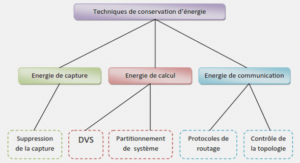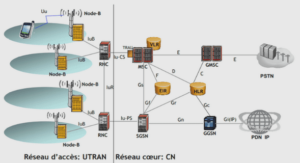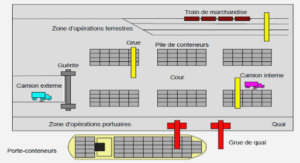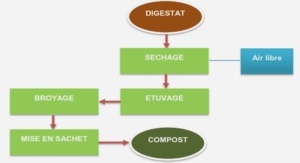ÉTAT DES CONNAISSANCES SUR LE RECRUTEMENT LARVAIRE
Introduction
Since Hjort’s work (1914, 1926) and his hypothesis on the « critical period », the importance of understanding larval growth and survival to explain inter-annual recruitment fluctuations in fish stocks has been demonstrated (Anderson 1988, Gushing 1990, 1996, Leggett & Deblois 1994, Beaugrand et al 2003). Depending on species, the most important part of the recruitment could be regulated during either the larval or juvenile stage (Houde,1987), as starvation and dispersion are among the factors that greatly affect fish early life mortality (Sinclair 1988, Gushing 1990). Moreover, high mortality during larval and juvenile stages is often attributable to more than one factor (Leggett et Deblois, 1994).Many paradigms have been put forth to explain larval recruitment in fish populations. According to the growth-predation hypotiiesis (Anderson 1988), fast growing larvae would experience a greater chance of surviving, as they would more easily escape from a predator than slow growing larvae. At a given age, slow growing larvae would be more easily eliminated by increased prédation due to their smaller size, as proposed by the « bigger-isbetter » hypothesis (Miller et al. 1988). Their prolonged larval stage would also expose them to high prédation that prevails during early life, as explained by the stage duration hypothesis (Chambers and Leggett 1987). The growth-selective prédation hypothesis of Takasuka et al. (2003, 2004a, 2004b) also suggested greater prédation on slow growing larvae due to higher energetic gain for predators feeding on them. However, in some cases, slower-growing larvae could have the greatest surviving chances because of higher prédation pressure on larger larvae from visual predators (Van der Veer et al 1994,Gleason & Bengtson 1996, Good et al 2001). Nevertheless, understanding the factors influencing larval growth of a fish population remains the key to predicting its recruitment fluctuations (Hjort 1926, Crecco & Savoy 1985, Good et al 2001, Takasuka & Aoki 2006).
Larval growth is influenced by environmental conditions. Therefore, abiotic conditions (e.g. temperature and turbulence) and biotic conditions (e.g. food availability) prevailing during the fish’s first stages will have a considerable impact on its growth and, consequently, on larval recruitment (Anderson 1988, Mackenzie 2000, Houde 2002, Takasuka & AoM 2006). Moreover, the variation of these parameters year after year will have a direct influence on the recruitment fluctuations and on year-class strength (Good et al. 2001, Ringuette et al. 2002, Robert et al 2006).
Fjords can be highly productive systems and can represent a good nursery habitat for many fish species (Muter et Norcross, 1994). Spawning of diverse fish has been observed in many Norwegian fjords along with the migration of larvae inside and outside the fjords (Skreslet, 1978). Generally, fjords experience high variations in environmental conditions, both spatially and temporally (Farmer & Freeland Î983). Thus, in some fjords, the fresh water runoff, combined with the sea water influence, creates an important temperature and salinity gradient. Estuarine circulation that normally takes place in such systems is characterized by distinct water layers (Ozretich, 1975). The surface layer is usually composed of brackish water, where salinity increases from upstream to downstream. The bottom layer is ordinarily characterized by sea water.
The Saguenay Fjord, in eastern Canada, is a typical fjord from a géomorphologie and an océanographie point of view (Syvitski et al 1987, Schafer et al 1990). The presence of three sills influences water circulation, creating important gradients of various abiotic and biotic conditions (e.g. temperature, salinity, zooplankton assemblage, etc.) (Drainville 1968,1970, Côté & Lacroix 1979, De Laduraataye et al 1984). This space and time variability should create important fluctuations in larval feeding, growth and survival in the fjord.
Rainbow smelt (Osmerus mordax) is one of the most abundant fish species that lives and reproduces in the Saguenay Fjord (Sirois et al 2009), constituting a genetically distinct population from the St Lawrence Estuary rainbow smelt populations (Lecomte 2005). Previous studies made in the neighboring estuary showed that the highest density of larval rainbow smelt was found at salinities between 0 and 10 PSU, which corresponds to the estuarine turbidity maximum (ETM) (Sirois & Dodson 2000b). It was also demonstrated that food density and parasitism had an important impact on growth and survival of larval rainbow smelt (Sirois & Dodson 2000a). In the St Lawrence Estuary ETM, the calanoid copepod Eurytemora affinis appeared to be the primary food source for fish larvae such as larval rainbow smelt (Winkler et al. 2003).
This study’s main objective was to assess the influence of environmental conditions on the density, growth and survival of larval rainbow smelt in the Saguenay Fjord. To reach this objective, mesozooplankton and rainbow smelt larvae were sampled in 2004 and 2005. Mesozooplankton assemblages were first used to determine biologically different zones in the Saguenay Fjord. Second, environmental conditions, such as mesozooplankton density, surface temperature and surface salinity, were compared between the three zones and related to density and growth of rainbow smelt larvae.
Materials and methods
Study site
The Saguenay Fjord is located on the north shore of the St. Lawrence Estuary, approximately 180 km north of Quebec City, Canada (Fig. 1). It is about 120 km long and its width varies between 1 km and 6 km (Schafer et aï. 1990). It is divided in three distinct basins (upper, mid, lower) separated by sills of variable depth. Its maximum depth reaches 275 m in the upper and main basin. A sill located at the fjord’s entrance at about 20 m deep limits water exchanges between the fjord and the neighboring St. Lawrence Estuary. The fjord’s waters in spring, summer and fall are characterized by a thermo-halocline that separates a thin (0-20 m), warm (5-20 °C) and brackish (2-25 PSU) surface layer from a thick (20-275 m), cold (0-2 °C) and salty (25-31 PSU) bottom layer. The surface layer is influenced by summer air warming and fresh water discharge of the Saguenay River (annual average: Î770 m3 s »1 ). In winter, waters are more homogenous and more salty as fresh water discharge declines. The bottom layer is renewed by the cold, salty and well oxygenated water of the St. Lawrence Estuary. The upper fjord is divided in two channels, the « bras du Nord » and the « Baie des Ha! Ha! », which is less influenced by fresh water discharge.
|
Table des matières
RÉSUMÉ
AVANT-PROPOS ET REMERCIEMENTS
LISTE DES TABLEAUX
LISTE DES FIGURES
1-INTRODUCTION GÉNÉRALE
1.1 ÉTAT DES CONNAISSANCES SUR LE RECRUTEMENT LARVAIRE
1.2 LES FJORDS
1.3 LE FJORD DU SAGUENAY
1.4 OBJECTIFS
CHAPITRE II
2.1 INTRODUCTION
2.2 MATERIALS AND METHODS
2.2.1 Study site
2.2.2 Fieldsurvey
2.2.3 Laboratory procedure
2.2.4 Computations and statistical analyses
2.3 RESULTS
2.3.1 Mesozooplankton assemblage and density
2.3.2 Physical characteristics
2.3.3 Larval rainbow smelt density and distribution
2.3.4 Larval rainbow smelt growth
2.4 DISCUSSION
2.4.1 Mesozooplankton assemblages
2.4.2 Physical conditions
2.4.3 Larval rainbow smelt density and distribution
2.4.4 Larval rainbow smelt growth
2.4.5 Recruitment
3-CONCLUSION GENESALE
LISTE DES TABLEAUX
Table 1. Results of three-way ANOVAs testing the effect of month, year and zone and their interactions on physical (surface salinity
4-Références
![]() Télécharger le rapport complet
Télécharger le rapport complet






